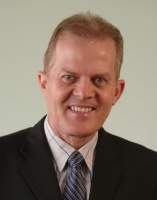- Forum
- categories
- Sanitation systems
- Faecal sludge management (FSM)
- Faecal sludge treatment technologies
- LaDePa is a faecal sludge pelletising machine in eThekwini (Durban)
LaDePa is a faecal sludge pelletising machine in eThekwini (Durban)
87.8k views
- ben
-

- Water and sanitation engineer
Less- Posts: 107
- Karma: 11
- Likes received: 57
Re: New sludge pelletising machine in eThekwini (Durban) wins IWA award
Extremly interesting research you're carrying here !
It looks like it's early to say but could you please give us an approximation of the potencial business model of this kind of installation.
Roughly, what is the price of the pelletiser, the cost of use and maintenance, how much do you expect to sell a kg of downstream product and how much is the VIP emptying cost ?
You said you emptied 35000 VIP in 3 years, can we consider you are emptying latrines of almost a 300 000 people area (5 people / latrine / emptied every 5 years) or the pelletiser has even a higher productivity ?
I know this is reducing the problem a lot to just turn this massive health problem into cost figures but that would be very interesting to see how much we could sell this idea to private entrepreneurs in developing world.
Congratulations again, great work and thanks for sharing !
Ben
Please Log in to join the conversation.
You need to login to reply- neilmacleod
-

- Consultant in water and sanitation, Honorary Research Fellow at UKZN
Less- Posts: 8
- Karma: 5
- Likes received: 9
Re: New sludge pelletising machine in eThekwini (Durban) wins IWA award
The pelletiser was specifically designed to process pit toilet sludge that is heavily contaminated with garbage. The machine first separates the sludge from the rags, boots, spoons, sheeps heads, etc. It then treats the sludge by heating it to a temperature in excess of 100 deg celcius for about 8 minutes - this renders it pathogen free and produces dry pellets that can be used as fertilizer. The garbage component is sent to a landfill site for disposal.
In Durban we provide one emptying of a VIP toilet every 5 years as a basic sanitation service. At present it takes us 3 years to empty the 35 000 VIP toilets in our area of operations - it is this sludge we process in the pelletiser. We do not empty the UD toilets at this stage, but the pelletiser has the potential to recover nutrients from that sludge as well
We recognise faeces and urine as potential sources of nutrients and energy, rather than as material to be 'avoided at all costs' and kept as far away from people as possible. This pelletiser is part of a series of interventions that we are working on to recover nutrients from human waste and then recover energy from what is left. The interventions have the potential to create many small businesses who will collect and process the waste and the fertilizer will also support food security.
I do not agree with the implied view that these solutions would only work in South Africa - all of Africa has a need for plant nutrients and energy and we are working on solutions that are practical and which can be used in any country in Africa and elsewhere in the world.
The flush toilets we use today were invented in 1860 and pit toilets have been around for millennia - the time has come for new technology that works for everyone and that is sustainable in every sense of the word(I call it a 4G toilet, using the mobile phone analogy)
Consultant and Honorary Research Fellow
Durban
South Africa
This email address is being protected from spambots. You need JavaScript enabled to view it.
Please Log in to join the conversation.
You need to login to replyRe: New sludge pelletising machine in eThekwini (Durban) wins IWA award
Dorothee, the TS might be above 80% (I guess). The process has been describe (very) shortly here
www.susana.org/lang-en/library?view=ccbktypeitem&type=2&id=1243 p. 28.
Actually it seems to me as sludge drying and each sludge drying process would give a pathogene and ascaris free sludge. The way of heating seems to be the only way to tackle the hygienic aspects safely in scale.
Elisabeth, thank you for the link to the viedeo, it is really worth to see it and the automatic resume link for the Forum. It really helps.
I really appreciate the enormous effort of the Durban people (tariff payers, researchers and employees). I got the impression they might be able to charge for visits and therefore have a third source of money?
Coming back to the hygienic aspects…. I think solar drying should be looked at for the sludge because the way presented (in this case still worse as it is a diesel generator) is not very energy friendly.
Yours
Christoph
Please Log in to join the conversation.
You need to login to replyRe: New sludge pelletising machine in eThekwini (Durban) wins IWA award
They have many different projects on many different types of "sanitation user interfaces".
As mentioned in the film, urine reuse was not the motivation at the beginning, but they are doing research on it now (as I remember including technology option for producing fertiliser, as well as the whole logistics and economics behind).
If the pellets are not used in agriculture – but as a fuel for instance (I do not have an idea of the final TS of the pellets) – solid waste will probably more be a problem for the process of producing the pellets than the reuse.
Looking forward to the feedback from the eThekwini people.
Dorothee
Developing methods and tools to support strategic planning for sustainable sanitation. Particular interested in novel technologies contributing to more inclusive and circular sanitation. This email address is being protected from spambots. You need JavaScript enabled to view it.
Please Log in to join the conversation.
You need to login to reply- Elisabeth
-
Topic Author
- User is blocked
- Freelance consultant since 2012
Less- Posts: 3372
- Karma: 54
- Likes received: 932
Re: New sludge pelletising machine in eThekwini (Durban) wins IWA award
Good questions. I will try to find out - have just e-mailed Chris Buckley and will encourage him to reply directly here (or else to send me his reply by e-mail).
My guesses are that it is mainly sludge from VIP latrines, and that they probably have some manual sorting to take out large items and a mechanical sieving process. And the question is whether the pellets are reused in agriculture or not.
From what our South African colleagues have told us about VIP latrine sludges, it is full of solid waste, as the people often have no other means for solid waste management, so the solid waste is dumped into the pit of the VIP latrine. - This should be one advantage of UDDTs where it is not so easy to dump large objects and if you do, then YOU have to take them out again almost immediately because the chamber is full straight away!
Regarding reuse, when we worked on the eThekwini UDDT case study I asked the question whether the people in the peri-urban areas need any fertiliser for their gardening activities, but I was told they don't do any gardening (urine is infiltrated and dried faeces is buried there, no reuse). This surprised me.
Hopefully, we will have some detailed input from our South African colleagues here soon, I will try to alert them to this discussion!
Regards,
Elisabeth
Freelance consultant on environmental and climate projects
Please Log in to join the conversation.
You need to login to replyRe: New sludge pelletising machine in eThekwini (Durban) wins IWA award
Do you have an idea what kind of sludge they are using for producing the pellets at the moment – i.e. how they are tackling the problem of material other than fecal matter in the sludge and quality control (from an agricultural point of view) for the pellets?
Best Dorothee
Developing methods and tools to support strategic planning for sustainable sanitation. Particular interested in novel technologies contributing to more inclusive and circular sanitation. This email address is being protected from spambots. You need JavaScript enabled to view it.
Please Log in to join the conversation.
You need to login to reply- Elisabeth
-
Topic Author
- User is blocked
- Freelance consultant since 2012
Less- Posts: 3372
- Karma: 54
- Likes received: 932
LaDePa is a faecal sludge pelletising machine in eThekwini (Durban)
We often hear about the great strides that eThekwini Municipality (Durban) in South Africa is making in regards to access to sanitation for low-income areas.
This 10 minute Video in Afrikaans which was shown on South African TV – and is amazingly detailed for general TV - , explains very well what is going on in sanitation in Durban:
Particularly interesting is the part about the new sludge pelletising machine (starts in the video around minute 5:41). This machine actually will be winning an award at IWA Kuala Lumpur Development Congress, as well as the eThekwini Community ablution blocks.
HARDWARE - WINNER
Towards a Sustainable Pit Latrine Management Strategy Through LaDePa Technology
NA Macleod
The eThekwini Municipality, Department of Water and Sanitation
Durban, South Africa
Urban pit latrines and their associate challenges, in particular the disposal of sludge, are ubiquitous to the developing world. LaDePa a technology piloted by eThekwini Municipality which services Durban, addresses the six major technical challenges and converts this waste into a product that is pathogen free and environmentally safe, making it potentially marketable to the agricultural sector, and thereby reducing the overall sludge disposal costs. The plant is small, containerised, self contained and therefore mobile. Capital and operational costs are low and the mechanics are simple and robust which suits low skilled operation and maintenance, and allows access to this technology by cash-strapped Municipalities and/or small entrepreneurs alike.
GIZ colleagues of mine who work in Sub-Saharan Africa will say to me “but Elisabeth, South Africa is different, not comparable to the rest of Africa”. Of course they are right, however it helps to know what CAN be done if there is political will (and better governance and a higher tax revenue than elsewhere in Sub-Saharan Africa). I find it particularly impressive how this is all done by an African municipality and without external donor support. Seems to me to be a very sustainable set-up.
And I am very curious to see what comes out of their two Gates-Foundation-funded research projects in urine diversion as well (one of them is also explained in the video, the one with EAWAG called VUNA).
(we also have two SuSanA case studies on two of their programmes, see www.susana.org/case-studies, click on South Africa)
Regards,
Elisabeth
Freelance consultant on environmental and climate projects
Please Log in to join the conversation.
You need to login to reply- Forum
- categories
- Sanitation systems
- Faecal sludge management (FSM)
- Faecal sludge treatment technologies
- LaDePa is a faecal sludge pelletising machine in eThekwini (Durban)







